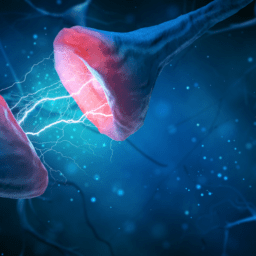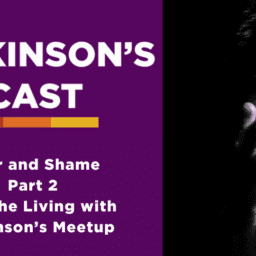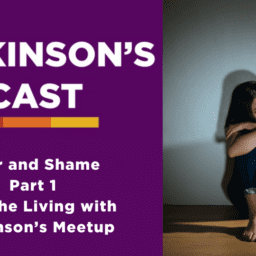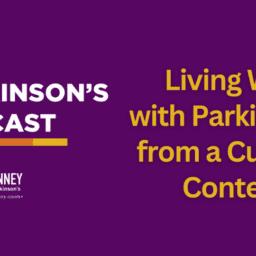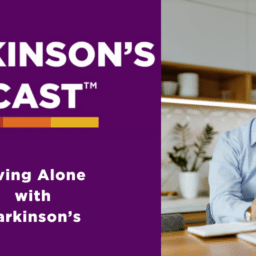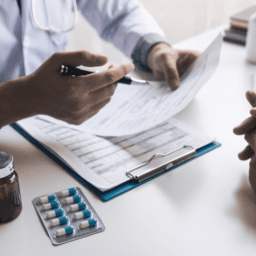The average time between when a person first notices a symptom associated with Parkinson’s and when that person is diagnosed with Parkinson’s is about 10 years. A common reason for the diagnostic delay is that many of the earliest symptoms of Parkinson’s–constipation, shoulder pain, sleep disruptions, and depression–can be attributed to many causes other than Parkinson’s.
There are patterns in who experiences delays in receiving diagnosis. For example, a 2011 study found that women experienced a 61% greater delay than men experienced in receiving a diagnosis of Parkinson’s. A 2021 study found that Black people living with Parkinson’s were an average of four years older than white people at diagnosis.
In 2021, The Lancet published an article that described other factors that cause delay in diagnosis including your legs being more prominently affected than your upper body, not having a prominent tremor, and living with young onset Parkinson’s (YOPD).
Difficulties in Diagnosing YOPD
Determining that someone has YOPD is often especially difficult–even for experienced clinicians.
Reasons for this include: People with YOPD often experience mild early symptoms; the presence of dystonia and increased muscle rigidity is regularly attributed to other causes like orthopedic or overuse injuries; and depression, mood disturbance, and other psychological conditions can be misinterpreted as being the core problem rather than being symptomatic of Parkinson’s.
A Core Issue: YOPD Is relatively rare
A primary reason it is difficult to diagnose YOPD is that YOPD is relatively rare, so care providers may be less likely to consider Parkinson’s as a possible diagnosis for a younger person.
In fact, YOPD is uncommon enough that it is difficult to find clear estimates of how many people live with it. A 2020 article cites data from 1991 and 1987 to establish an estimate that 3-5% of people diagnosed with Parkinson’s are under the age of 40 at the time of their diagnosis. A 2019 review of research found that YOPD diagnoses represent 5-7% of annual diagnoses in the western hemisphere. This same study also notes that different researchers have used different ages–generally between 40 and 55–as the cut-off for considering a person to have YOPD.
Based on these rates and overall estimates of Parkinson’s diagnoses in North America from 2022, somewhere between 2,700 and 6,300 people are diagnosed with YOPD every year in North America. While this is an imprecise estimate, the trend is clear: There are few physicians diagnosing YOPD each year.
A related Problem for People with YOPD: confidence in Diagnosis
At any age, it can be scary and difficult to hear that you have Parkinson’s.
It can be even more shocking to hear this at a time of life when you are raising children, progressing through a career, and when you are active and generally not the most likely person to receive the diagnosis.
The difficulty and shock, along with the relative rarity of YOPD and the delay you may experience in receiving a YOPD diagnosis can contribute to doubt or disbelief in your diagnosis. You might also find information about alternative possible diagnoses or causes of your symptoms, and since some of these alternatives are more benign and others are more severe, this can contribute to anxiety and further difficulty accepting the diagnosis.
How to be more confident in your YOPD Diagnosis
#1. Understand the criteria for a Parkinson’s diagnosis. Today, Parkinson’s is diagnosed by a care provider’s clinical observation of symptoms. There is no definitive diagnostic test or objective measurement that can independently establish a diagnosis.
In order for a care provider to consider a Parkinson’s diagnosis, they must observe bradykinesia and at least one other symptom: tremor, abnormal muscular rigidity, or gait and balance disruption.
Bradykinesia is a slowness of motion and may also present as a decreased speed and size of a motion repeated over time. When a care provider asks you to tap your fingers together or open and close your fist, they are evaluating the speed and size of your movements over time.
Although a resting tremor is most commonly associated with Parkinson’s, postural and action tremors can also occur. When a care provider asks you to hold your hands out in front of you with your arms fully extended, they are evaluating for postural tremor. When they ask you to touch your nose and then touch their finger, they are evaluating for action tremor.
Gait and balance disruption are uncommon–though they do occur–in people living with YOPD. Note that early falling can be a sign of atypical Parkinsonism.
#2. Understand the additional symptomatic evidence supporting a Parkinson’s diagnosis. There are many non-motor symptoms of Parkinson’s that can help clinician clarify your diagnosis when they suspect you have Parkinson’s but your primary symptoms are mild. The most common of these symptoms that are associated with YOPD include: constipation, loss of sense of smell, sleep disturbances including REM sleep disorder, orthostatic hypotension, depression, paresthesias (tingling sensations), and restless legs.
Another common way a clinician might attempt to clarify a suspected diagnosis is to see how your symptoms respond to levodopa. Having your symptoms reliably improve when you take levodopa is compatible with a Parkinson’s diagnosis.
#3. See a Movement Disorder Specialist (MDS). An MDS has a greater familiarity with the particular patterns and presentations of Parkinson’s, including the non-motor symptoms. Moreover, an MDS is more familiar with both how to complete a comprehensive neurological exam for Parkinson’s and how to determine if your symptoms are associated essential tremor, with atypical Parkinsonism, or other possible alternative diagnoses.
If the person who provided your diagnosis was not an MDS, consider getting a second opinion from one. Even if the person was an MDS, you may still seek a second opinion. Given the low number of YOPD diagnoses each year, not every MDS regularly sees people with YOPD.
#4. Ask your provider if a DaTscan or alpha-synuclein seed assay test is right for you. There are three tests that can provide evidence to help clarify a diagnosis. The DaTscan has the longest history but has greater room for error because it is an imaging exam, and there is possibility that movement during the exam or inappropriate body position may alter the results.
The Syn-One and SYNTap alpha-synuclein seed assay tests are more recent and are expected to become more widely used in research and in confirming diagnoses. Note that these tests can be expensive and may not be covered by your insurance.
#5. Consider genetic testing. While the overall understanding of genetic influence in Parkinson’s continues to evolve, for people with YOPD, specialists recommend genetic testing. There is a higher incidence of genetic variants in people with YOPD, including incidence of variants known to cause Parkinson’s. Importantly, not all genes associated with Parkinson’s are well understood, so if you undergo testing that finds a genetic variant, this–like the tests described above–cannot be the sole grounds upon which to establish a Parkinson’s diagnosis with absolute certainty.
#6. Have patience. Even with the best information and the most attentive care providers, sometimes the best course of action is to wait and see how your symptoms develop and change over time. The main reason for this are that the way your symptoms and your response to medication change over time can help differentiate between some atypical Parkinsonisms and Parkinson’s.
Additional Resources
Genetic Testing, Genetic Counseling, and YOPD
Do You (Really) Need a Movement Disorder Specialist
Young Onset Parkinson’s Disease: A Modern and Tailored Approach
WANT MORE PRACTICAL ARTICLES LIKE THIS?
You can learn much more about living well with Parkinson’s today through our Every Victory Counts® suite of resources. Each manual is packed with up-to-date information about everything Parkinson’s. Click the link below to order your manual(s).



